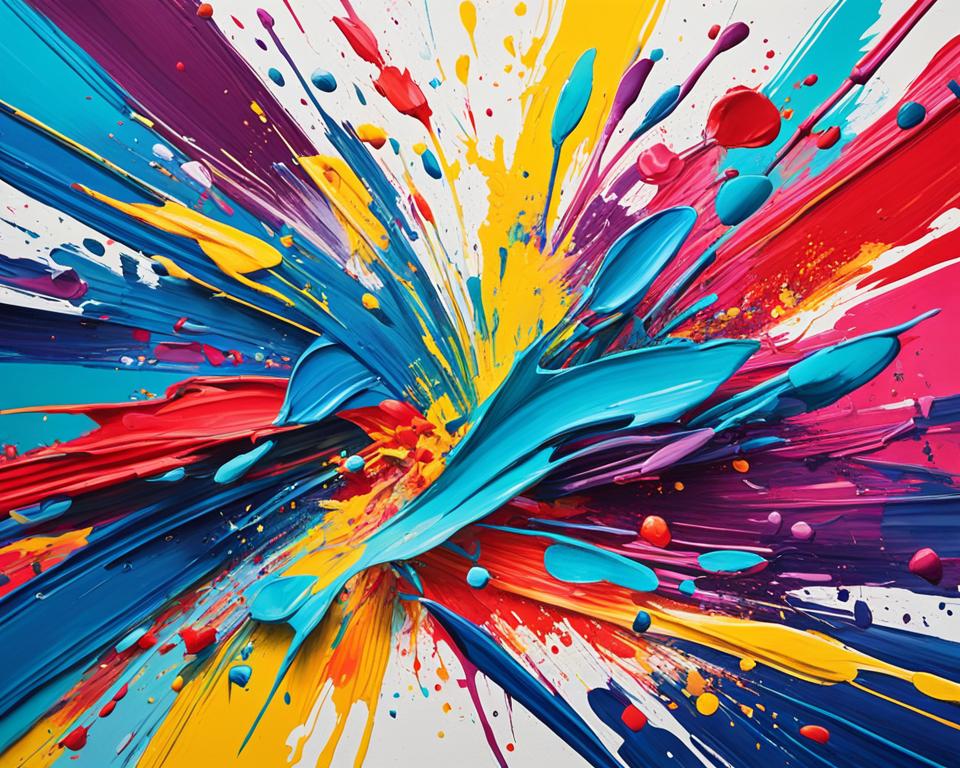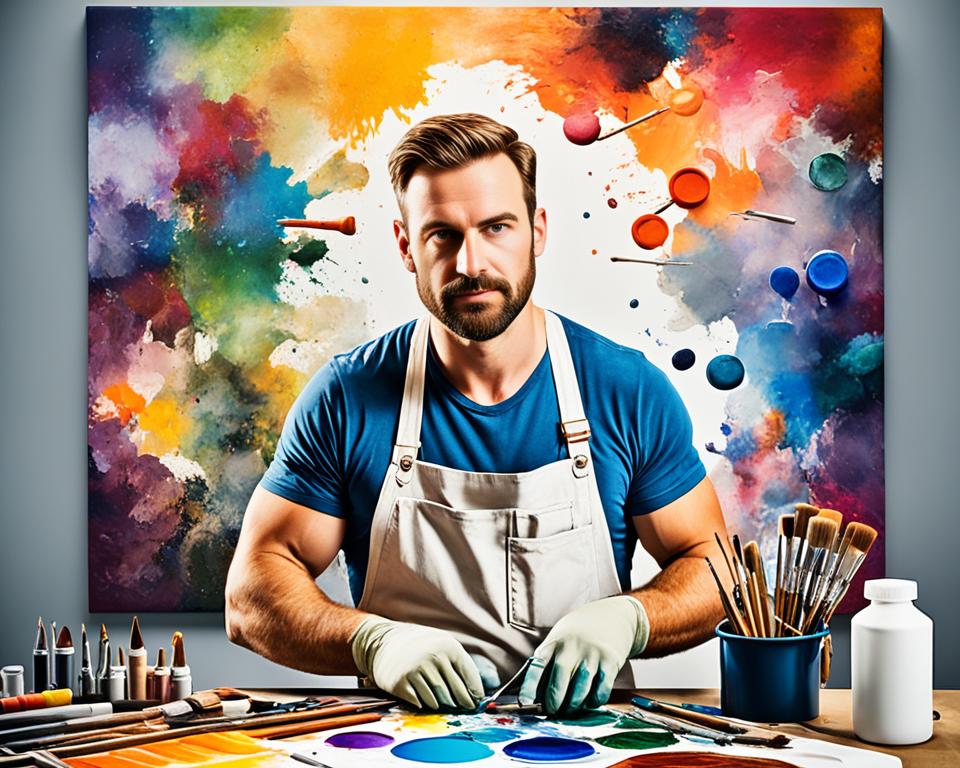Painting, an age-old form of artistic expression, has captivated humanity for centuries. This rich and diverse medium has evolved over time, giving rise to a myriad of styles and techniques that continue to inspire and delight both artists and art enthusiasts worldwide.
Exploring Painting as an Art Form Past and Present
In this article, we will embark on a journey through the world of painting, exploring its significance as an art form and delving into the captivating details of its past and present. From the various types of paints used to the distinct styles that have emerged throughout history, we will uncover the essence and allure of this time-honored medium.
Click on the painter’s name to find out more about these St Louis artists.
Key Takeaways:
- Painting is a timeless art form that has captivated audiences throughout history.
- There are various types of paints used in painting, each with its unique characteristics and uses.
- Styles of painting vary greatly, from realism and impressionism to abstract art and surrealism.
- Understanding different artistic periods helps us contextualize and appreciate the evolution of painting.
- Painting offers endless avenues for creativity and self-expression, both for artists and art enthusiasts alike.

Types of Paints: A Palette of Possibilities.
When it comes to painting, artists in St. Louis have a wide array of options to choose from when selecting the right type of paint for their artistic vision. Each type of paint offers unique characteristics and advantages, allowing artists to explore their creativity and achieve their desired effects. In this section, we will explore the different types of paints available and discuss their uses and qualities.
Oil Paints: Oil paints have been a favorite among artists for centuries. They are renowned for their rich, vibrant colors and slow drying time, allowing artists to blend and manipulate the paint on the canvas. Oil paints offer a wide range of textures and finishes, from smooth and glossy to thick and impasto. They are well-suited for traditional painting techniques and lend themselves beautifully to both realistic and expressive styles.
Acrylic Paints: Acrylic paints have gained immense popularity in recent years due to their versatility and quick drying time. They are water-based paints that can be diluted with water or acrylic mediums to achieve various effects. Acrylic paints adhere well to a variety of surfaces and are known for their vibrant colors and durability. They can be used in both thin layers for transparent effects or applied thickly for textured, impasto techniques.
Watercolors: Watercolor paints are a delicate and transparent medium that offers a unique charm and ethereal quality to artworks. They are typically used on paper and require careful planning and skillful control of water and pigments. Watercolors are known for their transparent washes and the ability to create soft, subtle shades. This medium is highly popular among landscape artists and those who enjoy capturing the beauty of nature.
Gouache: Gouache is a versatile paint that combines traits of both watercolors and acrylics. It offers the opaque and matte finish of an acrylic paint while also allowing for watercolor-like effects. Gouache can be used for both thin washes and thick applications, making it a favorite among illustrators and designers. Its vibrant colors and quick drying time make it a go-to choice for creating bold and striking artworks.
Essential Paint Supplies
Alongside the different types of paints, artists also require essential supplies to bring their artistic visions to life. These supplies include:
- Paintbrushes in various sizes and shapes
- Palette knives for mixing and applying paint
- Palettes for mixing colors
- Canvas or paper for painting surfaces
- Easels or painting stands for comfortable working
- Containers for water and cleaning brushes
These supplies, combined with the right type of paints, enable artists to explore their creativity and create stunning works of art.
By understanding the characteristics and uses of different types of paints and having the necessary supplies at hand, artists can unleash their artistic potential and bring their visions to life on the canvas.

Styles of Painting: Brushstrokes of Creativity.
Painting as an art form has given rise to a myriad of styles that have captivated and inspired artists and art enthusiasts alike. These styles reflect the diversity of human creativity and the unique ways in which artists choose to express themselves. In this section, we will explore some iconic styles of painting and the famous painters who have made significant contributions to these movements.
Realism
Realism emerged in the mid-19th century as a reaction against the idealized and romanticized depictions of the previous periods. Artists sought to depict the world as it truly appeared, with its imperfections and mundane details. One of the pioneers of this style is Gustave Courbet, a French painter known for his gritty and honest portrayals of everyday life.
Impressionism
Impressionism marked a significant departure from the traditional approach to painting. Artists like Claude Monet and Pierre-Auguste Renoir sought to capture the fleeting effects of light and color in their works, focusing on the impression rather than the precise details. Their loose brushstrokes and vibrant palette revolutionized the art world and laid the foundation for modern painting.
Abstract Art
In the early 20th century, artists began to move away from representational art and ventured into the realm of abstraction. Abstract art encompasses a wide range of styles, from Wassily Kandinsky’s geometric compositions to Jackson Pollock’s expressive and energetic drips and splatters. This style encourages viewers to interpret the artwork based on their own experiences and emotions.
Surrealism
Surrealism emerged as a response to the devastation and disillusionment of World War I. Artists like Salvador Dalí and René Magritte sought to explore the unconscious mind and tap into the realm of dreams and imagination. Surrealist paintings often feature bizarre and dreamlike imagery, challenging conventional notions of reality.
These are just a few examples of the myriad of painting styles that have emerged throughout history. Each style offers a unique perspective and a distinct visual language, allowing artists to express their thoughts, emotions, and observations in beautifully diverse ways.
Next, we will delve into the timelines and artistic periods that have shaped the evolution of painting as an art form, offering a deeper understanding of its rich history and influence.
Artistic Periods: A Journey Through Time.
Artistic periods have played a significant role in shaping the world of painting. From the Renaissance period to the Baroque period, Neoclassicism, Romanticism, and Realism, each era brings its own unique characteristics and influences to the art form.
The Renaissance Period
The Renaissance period, which emerged in the 14th century, marked a significant shift in art and culture. Artists such as Leonardo da Vinci, Michelangelo, and Raphael redefined painting techniques and explored themes inspired by humanism and the revival of classical Greek and Roman art. This period embraced naturalistic representation, deep perspective, and harmonious compositions.
The Baroque Period
In the 17th century, the Baroque period brought a sense of dynamic movement and dramatic lighting to painting. Caravaggio, Rembrandt, and Rubens were renowned artists of this period, known for their emotive and grandiose compositions. Baroque paintings often depicted religious and mythological scenes, characterized by rich colors, intricate details, and contrasting light and shadow.
Neoclassicism
Neoclassicism emerged in the late 18th century as a reaction against the ornate style of the Baroque period. Inspired by ancient Greek and Roman art, artists such as Jacques-Louis David sought to create art that conveyed moral and political messages. Neoclassical paintings were characterized by clean lines, simplicity, and idealized perfection.
Romanticism
In the early 19th century, Romanticism emerged as a response to the rationality of the Enlightenment era. Artists like Caspar David Friedrich and J.M.W. Turner emphasized emotion, imagination, and the sublime in their works. Romantic paintings often depicted dramatic landscapes, intense moments of human emotions, and a sense of awe for nature.
Realism
The Realism movement, which gained prominence in the mid-19th century, aimed to portray everyday life and society truthfully. Artists like Gustave Courbet and Edouard Manet shifted away from idealized images and instead focused on depicting the realities of contemporary society. Realist paintings often showcased ordinary people, social issues, and the effects of industrialization.
As we journey through these artistic periods, we witness the evolution of painting as an art form. Each era brings its own unique characteristics, concepts, and visions, contributing to the rich tapestry of artistic expression.
Conclusion
In conclusion, painting as an art form has thrived and transformed over the centuries. It showcases the boundless creativity of artists and their ability to adapt to new styles, techniques, and materials. The exploration of different types of paints, from the rich textures of oil paints to the vibrant hues of acrylics and watercolors, offers artists a diverse palette of possibilities to bring their visions to life.
The diverse styles of painting, such as realism, impressionism, abstract art, and surrealism, provide artists with unique ways to express their emotions, perspectives, and experiences. From capturing delicate brushstrokes in realistic portraits to creating bold, abstract compositions, painting allows artists to explore the depths of their imagination and create personal interpretations of the world.
Moreover, appreciating the various artistic periods, from the intricacies of the Renaissance to the grandeur of the Baroque and the rebelliousness of Romanticism, deepens our understanding of the historical and cultural contexts in which art evolves. It connects us to the legacy of renowned painters like Leonardo da Vinci, Vincent van Gogh, and Frida Kahlo, who have left an indelible mark on the artistic landscape.
Whether you are an aspiring artist seeking inspiration or an art enthusiast looking to appreciate the beauty of painted masterpieces, the world of painting offers an endless journey of creativity and interpretation. So pick up a brush, explore the vast array of paints, experiment with different styles, and immerse yourself in the captivating world of painting.
FAQ
What are the different types of paints used in painting?
There are various types of paints used in painting, including oil paints, acrylic paints, watercolors, and gouache. Each type of paint has its own unique characteristics and uses, allowing artists to create different effects and textures in their artwork.
What are the essential paint supplies needed for painting?
The essential paint supplies needed for painting include brushes of different sizes and shapes, a palette for mixing colors, a palette knife for applying paint, canvas or paper to paint on, and a variety of paints depending on the artist’s preferences and desired effects.
What are some popular styles of painting?
There are many different styles of painting, each with its own distinct characteristics and techniques. Some popular styles include realism, impressionism, abstract art, and surrealism. These styles offer artists different ways to express their creativity and convey their ideas.
Who are some famous painters associated with different styles of painting?
There have been many famous painters throughout history who have made significant contributions to different styles of painting. For example, Leonardo da Vinci and Michelangelo are renowned for their work during the Renaissance period, while Vincent van Gogh is known for his expressive style in post-impressionism. Pablo Picasso and Salvador Dalí are famous for their contributions to the surrealist movement.
What are some of the major artistic periods that have influenced painting?
There have been several major artistic periods throughout history that have greatly influenced the art of painting. These include the Renaissance period, characterized by a renewed interest in classical art; the Baroque period, known for its dramatic and ornate style; the Neoclassical period, which drew inspiration from ancient Greece and Rome; the Romantic period, focusing on emotions and individual expression; and the Realism period, emphasizing the depiction of everyday life with accuracy.